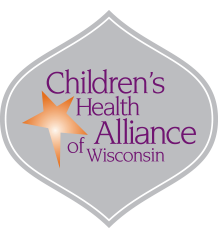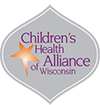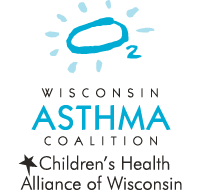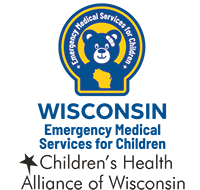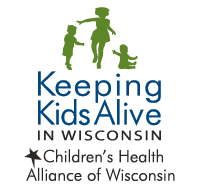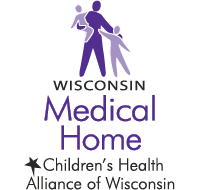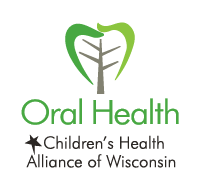Education & Resources
Education & Resources
Pediatric patients make up 23% of emergency department visits and just 6% of ambulance runs in Wisconsin. Although pediatric calls are less frequent, it’s important for your service to be ready. Explore these trainings to keep your pediatric skills current.
Emergency Department Pediatric Readiness Implementation Guide
This guide is meant to be a question-by-question reference, organized in the same manner as the National Pediatric Readiness assessment. It is organized so that you may review the sections and questions that are most important for you and your department, to address and maximize your NPRP score and pediatric preparedness.
Wisconsin EMSC Webinars
WI EMSC has hosted the below webinars focused on different areas of emergency department (ED) pediatric readiness.
- Get Ready to be Peds-Ready: Dr. Katherine Remick
- Pediatric Behavioral and Mental Health: Dr. Moh Saidinejad
- Pediatric Minor Head Trauma and CT Use: Dr. Jeffrey Schunk | Slides
- ProHealth’s Response – Waukesha Christmas Parade MCI Event: Michelle Hackett, Sherry Berg, Nicholle Palm | Slides
- Using Simulation to Improve Pediatric Readiness: Dr. Marc Auerbach
- Wisconsin Pediatric Surge Plan: Amanda Hauser and Maureen Luetje, DO | Slides
Ongoing Pediatric Emergency Care Trainings
American Heart Association
Find pediatric life support courses and CPR information.
Autism Awareness and Interaction
Learn how to recognize and interact with children who have autism, and help reduce or eliminate dangerous behaviors.
Child Abuse Recognition
These modules will help you identify accidental and intentional injuries in children.
Midwest EMS for Children YouTube Channel
View previously recorded presentations from emergency care experts on a variety of topics.
National Child Traumatic Stress Network
Find the latest science-based trainings in the areas of assessment, treatment, research and evaluation, and organizational and systems change for traumatized children, adolescents and their families.
Pediatric Education and Advocacy Kits
Collections of best practice educational resources designed to empower to deliver the highest quality of care and support to children in emergency settings.
Pediatric Education for Prehospital Professionals
Developed by the American Academy of Pediatrics, PEPP is an exciting curriculum designed to teach prehospital professionals how to better assess and manage ill or injured children.
Pediatric Prehospital Education Toolbox
This toolbox provides resources to ensure prehospital professionals have the knowledge and skills necessary to provide safe, effective, family-centered emergency care for children.
Project ECHO
Project ECHO (Extension for Community Healthcare Outcomes) is a telehealth initiative that connects surgical specialists at UW-Madison with emergency care providers across the region. CE credit is available.
Putting Child Passenger Safety (CPS) in Emergency Vehicles
Online course designed to prepare EMS providers to safely transport children in emergency vehicles.
Respiratory Distress Course on TRAIN WI
Online course designed to prepare EMS providers to respond to pediatric respiratory distress.
Responding to Pediatric Tracheostomy & Ventilator Emergencies Course on TRAIN WI
Online course designed to prepare EMS providers to respond to emergencies involving infants and children with tracheostomies and ventilators.
Emergency Department Pediatric Readiness Resources
COVID-19 and the ED Digital Toolkit
Social media posts and newsletter templates for your ED’s social media accounts.
Guidelines for Care of Children in the Emergency Department Checklist
Use this checklist to determine if your emergency department is prepared to care for children.
Hospital Recognition Fact Sheet
Learn how pediatric hospital recognition programs designate and verify a hospital’s capacity to provide care to children.
Interfacility Transfer Toolbox
Formalize procedures for transferring pediatric patients to specialized centers for optimal care.
Joint Policy Statement: Guidelines for Care of Children in the Emergency Department
These AAP joint statements outline resources necessary to ensure that EDs are ready to care for children of all ages.
MIS-C Clinical Pathway
Learn about the MIS-C Clinical Pathway specific for Wisconsin.
National Pediatric Readiness Project
Learn about this national, multi-phase quality improvement initiative.
National Pediatric Readiness Toolkit
This toolkit will help you better understand and achieve aspects of pediatric readiness in the emergency department.
Patient- and Family-Centered Care Toolbox
Use these resources to ensure that patient and family perspectives, choices, knowledge, values, beliefs and cultural backgrounds are incorporated into the planning and delivery of care.
Pediatric Disaster Preparedness Toolbox
In a disaster, it’s important to have appropriate pediatric equipment and supplies, medical oversight, protocols and guidelines, and training in the care of children.
Pediatric Equipment Toolbox
This toolbox provides the most recent guidelines, resources, position papers and journal articles on pediatric equipment guidelines.
Pediatric Pain Management Toolbox
The assessment and management of pediatric pain can be a real challenge for health care providers. Learn how to better understand, assess and relieve children’s pain in prehospital settings.
State Pediatric Imaging Guidelines
Use these guidelines when conducting imaging of pediatric patients for blunt trauma.
Prehospital Pediatric Readiness Resources
Equipment for Ground Ambulances
The American Academy of Pediatrics, the National Association of State EMS Officials, EMSC and other partners have developed this list of essential pediatric equipment for ground ambulances.
Equipment for Ground Ambulances – 2014 Joint Policy Statement
This statement includes a recommended core list of supplies and equipment that should be stocked on ground ambulances to provide the accepted standards of patient care.
Family-Centered Prehospital Care: Partnering with Families to Improve Care
This resource includes practical tips for providing family-centered prehospital care.
Ground and Air Medical Quality in Transport (GAMUT) Metrics
The GAMUT metrics are patient-centric and most are based on medical literature demonstrating an improvement in patient outcomes.
Kansas Pediatric Scenario Guidebook
This guidebook includes various scenarios containing vital signs, pertinent patient and call information, graphics, considerations and links for additional educational opportunities.
Medical Direction Toolbox
This toolkit provides guidance for physician medical directors and EMS administrators on the roles and responsibilities of the EMS medical director and the incorporation of pediatrics into EMS medical oversight.
National EMS Quality Alliance Measure Set
In August 2019, the NEMSQA Measure Development Committee and Board of Trustees approved the eleven measures for inclusion in the National EMS Quality Alliance Measure Set to help EMS agencies measure improvement in care.
National Model EMS Clinical Guidelines – National Association of State EMS Officials
These guidelines were developed by the National Association of State EMS Officials (NASEMSO) to facilitate the creation of state and local EMS system clinical guidelines, protocols, or operating procedures.
Patient- and Family-Centered Care Toolbox
Use these resources to ensure that patient and family perspectives, choices, knowledge, values, beliefs and cultural backgrounds are incorporated into the planning and delivery of care.
Pediatric Disaster Preparedness Toolbox
In a disaster, it’s important to have appropriate pediatric equipment and supplies, medical oversight, protocols and guidelines, and training in the care of children.
Pediatric Equipment Toolbox
This toolbox provides the most recent guidelines, resources, position papers and journal articles on pediatric equipment guidelines.
Pediatric Pain Management Toolbox
The assessment and management of pediatric pain can be a real challenge for health care providers. Learn how to better understand, assess and relieve children’s pain in prehospital settings.
Pediatric Prehospital Education Toolbox
Identify educational needs, develop curricula and establish standards to ensure prehospital professionals have the knowledge and skills necessary to provide safe, effective, family-centered emergency care for children.
Prehospital Pediatric Readiness Toolkit
These tools and resources are aligned with the Joint Policy Statement and will assist prehospital emergency care providers to better understand and achieve the components of pediatric readiness in the prehospital environment.
Standards of Care Manual – Milwaukee County Office of Emergency Management
This manual includes medical policies, operational guidelines, practice guidelines and practical skills meant to guide prehospital medical care provided within Milwaukee County EMS systems.
Contact Our Staff
Carissa Brunner, MPH, CLC
Program Leader
Emergency Care
(414) 266-4773
cbrunner@childrenswi.org
Sign Up for Our Newsletter
1-2-3 EMSC
A quarterly newsletter highlighting pediatric emergency care news and events.
Emergency Medical Services for Children is funded by the Wisconsin Department of Health Services, Division of Public Health, through the National Emergency Medical Services for Children program, administered by the Health Resources and Services Administration’s Maternal and Child Health Bureau.
